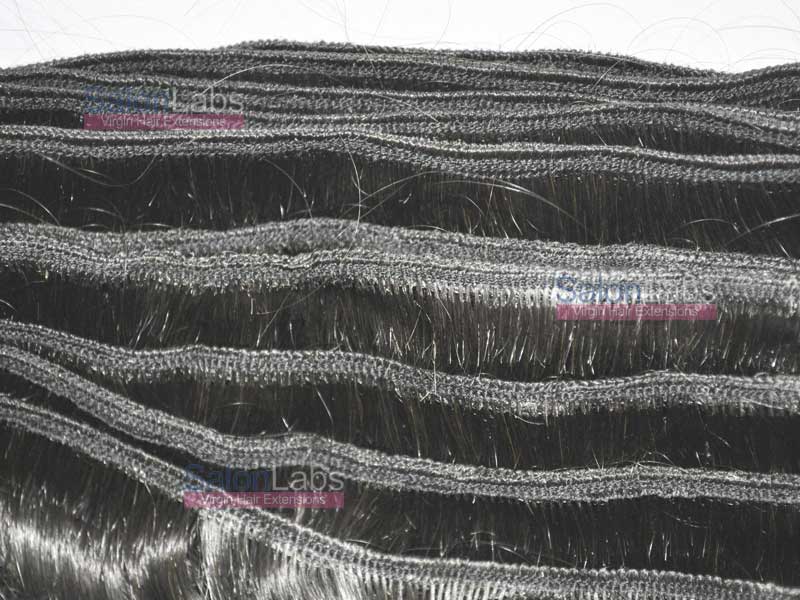Machine Weft Hair Extensions
MACHINE WEFT is one of the hair extension application application types which are woven in to your natural hair. SEW IN process initially requires one’s natural tresses to be braided around the head in concentric circles. Once these natural braids are sewn down, the WEFTS are sewn to the braids. Wefting is the process where the bulk hair stitched together by securing the ends of root part of hair strands together through the specially designed sewing machines. See below for facts about machine wefts.
Machine weft is the most common type of application used by hair extensions users.
- Machine wefts can also be used to make clip-in pieces
- Pieces of tracks can be glued with special adhesive or taped directly in to your own hair (close to the scalp). This method is a very popular temporary application type to add volume or vibrant streaks of colors to your natural hair.
- Track width in each bundle varies based on length of hair, weight of the bundle and hair texture.
- Machine wefts can be manufactured thinner (single track) or thicker (double or triple fold) depending on clients’ requirements.
- Machine wefts can be manufactured with glue or without glue on track area.
- All hair sheds but tracks manufactured with thin layer of glue actually minimize shedding to some extent.
To prevent damage to your natural hair, tracks shouldn't be left for any longer than four to six weeks.
The weft of machine tied hair is thicker than hand tied weft and it seems easier for weaving than hand tied ones. Hand tied weft is micro thin and barely visible, so it is more undetectable and flexible. Hand tied wefts are made by tying strands of hair around a strong weaving thread; this process is done by hand. Our hand tied wefts are much thinner than machine wefts because of the precision involved, and lay flat on the scalp. Machine wefts are made by sewing strands of hair together with a hair sewing machine.
Hand-tied wefts are thinner and more flexible than machine-tied wefts. The weft is flatter and allows the Raw Indian hair extensions to lay closer to the head giving a more natural look. As the hair underneath grows the flexibility of hand-tied wefts helps to keep the weft from sticking out from the undergrowth. When sewn in, they can be folded over to best fit the track. The weft is flexible so it will not stick out or cause lumpy areas around the crown.
Machine wefts are easier to use and they are the most common type used. Indian Raw Indian hair made with a machine weft can be soft and somewhat flexible. Machine weft hair will also last a long time without shedding. These wefts are easier to put in as the stylist can simply start on one end, sew in the weft, and then cut it at the end of the track. Machine wefts also work well when using clip-on wefts, or when bonding the hair to the scalp.








